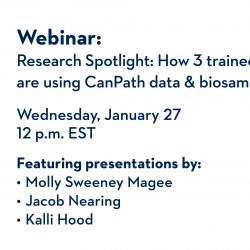Diabetes, Brain Infarcts, Cognition, and Small Vessels in the Canadian Alliance for Healthy Hearts and Minds Study
Journal: The Journal of Clinical Endocrinology & Metabolism Authors: Hertzel C Gerstein, Eric E Smith, Chinthanie Ramasundarahettige, Dipika Desai, Philip Awadalla, Philippe Broet, Sandra Black, Trevor J B Dummer, Jason Hicks, Alan Moody, Jean-Claude Tardif, Koon K Teo, Jennifer Vena, Salim Yusuf, Douglas S Lee, Matthias G Friedrich, Sonia S Anand Abstract: Background Diabetes is a risk factor for cerebrovascular disease and cognitive impairment. The anatomical basis for this is uncertain. Methods The Canadian Alliance for Healthy Hearts and Minds collected brain and carotid magnetic resonance imaging (MRI) and 2 cognitive tests (the Digit Symbol Substitution Test and the Montreal Cognitive Assessment test) in a cross-sectional sample of men and women. Brain MRIs identified brain infarcts (BI), lacunar BI, high white matter hyperintensity (WMH), vascular brain injury (VBI; BI or high WMH), and small vessel VBI (lacunar BI or high WMH). Carotid MRIs estimated carotid wall volume, a measure of subclinical atherosclerosis. Cognitive scores were standardized to each site’s mean score, and cognitive impairment was identified by 1 or both test scores ≤1 standard deviation below the site’s mean score on that test. Results The 7733 participants included 495 participants (6.4%) with diabetes, of whom 388 were taking diabetes drugs. After age and sex adjustment, diabetes was independently associated with BI (odds ratio [OR] 1.53, 95% confidence interval [CI] 1.05, 2.24), VBI (OR 1.64, 95% CI 1.26, 2.13), small vessel VBI (OR 1.67, 95% CI 1.28, 2.19), and cognitive impairment (OR 1.47, 95% CI 1.20, 1.80). The association between diabetes and small vessel VBI persisted after adjustment for cerebrovascular disease risk factors and nonlacunar infarcts (OR 1.52, 95% CI 1.15, 2.01), and the association with cognitive impairment persisted after adjustment for small vessel VBI (OR 1.27, 95% CI 1.03, 1.56). Conclusion Small vessel disease characterizes much of the relationship between diabetes and VBI. However, additional factors are required to disentangle the relationship between diabetes and cognitive impairment. Link: https://doi.org/10.1210/clinem/dgaa815







